
Santiago del Estero Province
Encyclopedia
Santiago del Estero is a province
of Argentina
, located in the north of the country. Neighbouring provinces are from the north clockwise Salta
, Chaco
, Santa Fe
, Córdoba, Catamarca
and Tucumán
.
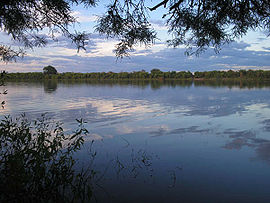 The autochthonous inhabitants of these lands were the Juríes-Tonocotés, Sanavirónes and other tribes. Intriguingly, Santiago del Estero is still home to about 100,000 speakers of the local variety of Quechua
The autochthonous inhabitants of these lands were the Juríes-Tonocotés, Sanavirónes and other tribes. Intriguingly, Santiago del Estero is still home to about 100,000 speakers of the local variety of Quechua
, making this the southernmost outpost of the language of the Incas. Quite when the language reached the area, and how, remains unclear, however - it may even have arrived only with the native troops that accompanied the first Spanish expeditions.
Diego de Rojas
first reached this lands in 1542. Francisco de Aguirre
founded the city of Santiago del Estero
in 1553 as the most northerly city founded by Spanish conquistador
es coming from the Pacific Ocean
.
Santiago then belonged to different governments, passing from the intendency of Tucumán
to the Audiencia de Charcas, then again to Tucumán, of which it was later to be named capital.
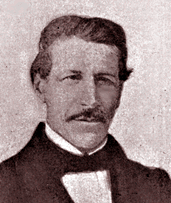 However, the bishop moved to Córdoba
However, the bishop moved to Córdoba
in 1699 and the government moved to Salta
two years later. Furthermore, the silver route between Buenos Aires
and the Viceroyalty of Peru
passed through Tucumán rather than through Santiago. The combination of these circumstances drastically reduced the importance of the city and the territory and, by the beginning of the 19th century, the city had barely 5,000 inhabitants.
With the creation of the intendency of Salta, Santiago del Estero was transferred to the new intendency of Tucumán. In the middle of the national conflict, Santiago del Estero separated from Tucumán in 1820, coming under the control of pro-autonomy Governor Juan Felipe Ibarra. Among the new province's most effective advocates during its early decades was Amancio Jacinto Alcorta
, a young composer of sacral music who, representing his province from 1826 to 1862, helped modernize commerce and its taxation in the unstable young nation and promoted domestic banking and credit. In 1856 the provincial constitution was formulated.
At the beginning of the 20th century Santiago del Estero acquired part of the lands that were the subject of a dispute with Chaco Province
. By then the province had four cities and 35,000 inhabitants, most of whom lived in precarious conditions. The construction of the Los Quiroga dam in 1950 enabled the productivity of the otherwise arid land to be increased by irrigation.
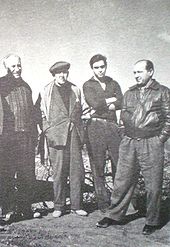 During the 1890s, national policy makers were made aware of a little-publicized tourist route northwest of the city of Santiago del Estero, whereby, despite the abject lack of transportation or lodging amenities, a steady stream of visitors rode on horseback over craggy terrain for hours for the sake of enjoying a cluster of mineral springs rarely mentioned since Spaniards had first noticed them in 1543.
During the 1890s, national policy makers were made aware of a little-publicized tourist route northwest of the city of Santiago del Estero, whereby, despite the abject lack of transportation or lodging amenities, a steady stream of visitors rode on horseback over craggy terrain for hours for the sake of enjoying a cluster of mineral springs rarely mentioned since Spaniards had first noticed them in 1543.
Becoming increasingly well-known, the Argentine Dept. of Agriculture commissioned University of Buenos Aires
Chemistry Professor Hercules Corti to study the springs. Completing his report in 1918, Dr. Corti confirmed that the Río Hondo Hot Springs
were among the most therapeutic on earth and, coming at a time when mineral springs were becoming a leading destination for "health tourism", Río Hondo quickly began attracting visitors from all over Argentina. Set aside as a public resort in 1932, the first formal hotel facilities were opened in the late 1940s and they are, today, the world's second-most visited mineral hot springs, after the ones in Reykjavik, Iceland.
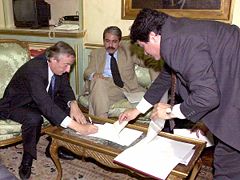 while Classical Bigotito Yuta Aníbal Fernández watches.
while Classical Bigotito Yuta Aníbal Fernández watches.
The province, in 1948, elected a young Peronist
activist named Carlos Juárez
Governor of the province. Santiago del Estero's central political figure during the late 20th century, Juárez was as energetic as he was ambitious and he soon became indispensable to local politics (mostly by proxy). A true Caudillo (strongman), his amiable demeanor belied a profound ruthlessness and, meanwhile, Santiago del Estero remained one of the poorest provinces in Argentina, falling further behind. Juárez, by the 1990s, was readily ordering his opponents' deaths, notably those of former Governor César Iturre in 1996 and of Bishop Gerardo Sueldo in 1998.
The deaths of two local young women, however, exposed Juárez's assassin, Antonio Musa Azar, and, faced with undeniable links to Musa Azar's litany of past murders and extortions, Juárez resigned in late 2002. His wife, Nina Aragonés de Juárez, was hand-picked to replace him; but, she was herself removed from office by order of President Néstor Kirchner
in March, 2004.
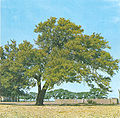 The province is located almost completely in the flat lands of the Gran Chaco
The province is located almost completely in the flat lands of the Gran Chaco
, with some depressions. In these depressions lagoons have formed, mainly at Bañado de Figueroa, Bañado de Añatuya, and those near the basin of the Salado and Dulce River
s. The Sumampa and Ambargasta sierras are the result of the influence of the Pampas at the southwest.
The soil, rich in lime and salt, is arid and characterised by semi-deserts and steppe
s. The predominant weather is sub-tropical with a dry season and high temperatures during the entire year; the annual average is 21.5°C, increased to 24°C in the latest years, with maxima of up to 50°C, with visible increases in temperature since 1970. Surprisingly, the maximum was of 38°C before 1910; and minima of -5°C, which has increased to -2°C. The dry season, during the winter, receives an average of 120 mm of precipitation, but the annual average is 700 mm.
The economy of the province still leans toward primary production, specially in agriculture, about 12% of the province's output. Centred on the basins of the Salado and Dulce Rivers, the main crops include cotton
(20% of the national production), soybean
, maize
and onion
.
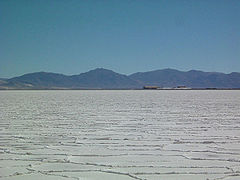 Cattle farming is also important, mainly in the east, where weather conditions make it possible, but goat
Cattle farming is also important, mainly in the east, where weather conditions make it possible, but goat
s, with 15% of the national production, adapt better to the rest of the province.
The wood industry of quebracho
and algarrobo
has also added implanted species totaling an annual average of over 300 thousand tons, of which around 100,000 tons are used for timber and the rest for firewood and vegetal coal.
There is little mining but in the salt flats in the southwest. Manufacturing (less than 10% of output) consisits of small industrial enterprises centred mainly on food, textiles and leather.
Tourism is somewhat developed, but only around the main tourist attractions. Tourists visit Santiago del Estero
(the oldest city in Argentina) and its historical buildings and museums, Termas de Río Hondo
and the Río Hondo hot spring
s with its 200 hotels, and the Frontal dam where water sports are practiced.
The province is home to the Copo National Park
, and four protected areas: Bañados de Figueroa, Sierras de Ambargasta, Sierra de Guasayan and Sierras de Sumampa.
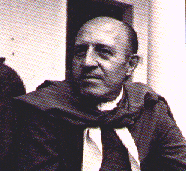 Important figures connected to the history of Santiago del Estero include colonel Juan Francisco Borges, leader of the Independence War
Important figures connected to the history of Santiago del Estero include colonel Juan Francisco Borges, leader of the Independence War
(and ancestor of writer Jorge Luis Borges
), as well as the revolutionary leaders Mario Roberto
and Francisco René Santucho, founders of the Partido Revolucionario de los Trabajadores
and the Ejército Revolucionario del Pueblo
.
Among the province's most distinguished cultural figures since the 19th century have been painters Felipe Taboada, Ramon Gómez Cornet, Carlos Sánchez Gramajo, Alfredo Gogna, and Ricardo and Rafael Touriño, as well as writers Jorge Washington Ábalos, Bernardo Canal Feijóo, Clementina Rosa Quenel and Julio Carreras (h)
. Amancio Jacinto Alcorta
, a celebrated composer of flute concerto
es and religious music
, also represented Santiago del Estero in Congress through much of the mid-19th century with distinction.
Santiago del Estero's musical heritage is one of its most important cultural aspects, with typical folklore chacarera
and zamba. Renowned artists and groups include the Manseros Santiagueños, Alfredo Ábalos, Leo Dan, Jacinto Piedra and Raly Barrionuevo. The province's best-known folk music ensemble is probably the Ábalos Brothers, active in the genre since 1945 and recording since 1952. Though in their eighties and nineties, all five still perform and have become, over the decades, among the best-known folk musicians in Argentina.
(Spanish: departamentos).
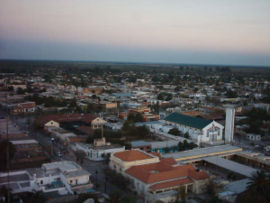
 Department (Capital)
Department (Capital)
Provinces of Argentina
Argentina is subdivided into twenty-three provinces and one autonomous city...
of Argentina
Argentina
Argentina , officially the Argentine Republic , is the second largest country in South America by land area, after Brazil. It is constituted as a federation of 23 provinces and an autonomous city, Buenos Aires...
, located in the north of the country. Neighbouring provinces are from the north clockwise Salta
Salta Province
Salta is a province of Argentina, located in the northwest of the country. Neighboring provinces are from the east clockwise Formosa, Chaco, Santiago del Estero, Tucumán and Catamarca. It also surrounds Jujuy...
, Chaco
Chaco Province
Chaco is an Argentine province located in the north of the country, near the border with Paraguay. Its capital is Resistencia on the Paraná River opposite the city of Corrientes...
, Santa Fe
Santa Fe Province
The Invincible Province of Santa Fe, in Spanish Provincia Invencible de Santa Fe , is a province of Argentina, located in the center-east of the country. Neighboring provinces are from the north clockwise Chaco , Corrientes, Entre Ríos, Buenos Aires, Córdoba, and Santiago del Estero...
, Córdoba, Catamarca
Catamarca Province
Catamarca is a province of Argentina, located in the northwest of the country. The province has a population of 334,568 as per the , and covers an area of 102,602 km². Its literacy rate is 95.5%. Neighbouring provinces are : Salta, Tucumán, Santiago del Estero, Córdoba, and La Rioja...
and Tucumán
Tucumán Province
Tucumán is the most densely populated, and the smallest by land area, of the provinces of Argentina. Located in the northwest of the country, the capital is San Miguel de Tucumán, often shortened to Tucumán. Neighboring provinces are, clockwise from the north: Salta, Santiago del Estero and...
.
History

Quechua languages
Quechua is a Native South American language family and dialect cluster spoken primarily in the Andes of South America, derived from an original common ancestor language, Proto-Quechua. It is the most widely spoken language family of the indigenous peoples of the Americas, with a total of probably...
, making this the southernmost outpost of the language of the Incas. Quite when the language reached the area, and how, remains unclear, however - it may even have arrived only with the native troops that accompanied the first Spanish expeditions.
Diego de Rojas
Diego de Rojas
Diego de Rojas was a 16th century Spanish Conquistador. He was born in Burgos and traveled to the city of Santo Domingo in 1516. In 1522 went to Mexico under the command of Hernan Cortes, and subsequently formed part of the conquistador army of Pedro de Alvarado, participating in the conquests of...
first reached this lands in 1542. Francisco de Aguirre
Francisco de Aguirre
Francisco de Aguirre may refer to:*Francisco de Aguirre , Spanish conquistador of Chile*Francisco de Aguirre , Spanish Baroque painter from Toledo...
founded the city of Santiago del Estero
Santiago del Estero
Santiago del Estero is the capital of Santiago del Estero Province in northern Argentina. It has a population of 244,733 inhabitants, making it the twelfth largest city in the country, with a surface area of 2,116 km². It lies on the Dulce River and on National Route 9, at a distance of...
in 1553 as the most northerly city founded by Spanish conquistador
Conquistador
Conquistadors were Spanish soldiers, explorers, and adventurers who brought much of the Americas under the control of Spain in the 15th to 16th centuries, following Europe's discovery of the New World by Christopher Columbus in 1492...
es coming from the Pacific Ocean
Pacific Ocean
The Pacific Ocean is the largest of the Earth's oceanic divisions. It extends from the Arctic in the north to the Southern Ocean in the south, bounded by Asia and Australia in the west, and the Americas in the east.At 165.2 million square kilometres in area, this largest division of the World...
.
Santiago then belonged to different governments, passing from the intendency of Tucumán
Tucumán Province
Tucumán is the most densely populated, and the smallest by land area, of the provinces of Argentina. Located in the northwest of the country, the capital is San Miguel de Tucumán, often shortened to Tucumán. Neighboring provinces are, clockwise from the north: Salta, Santiago del Estero and...
to the Audiencia de Charcas, then again to Tucumán, of which it was later to be named capital.

Córdoba, Argentina
Córdoba is a city located near the geographical center of Argentina, in the foothills of the Sierras Chicas on the Suquía River, about northwest of Buenos Aires. It is the capital of Córdoba Province. Córdoba is the second-largest city in Argentina after the federal capital Buenos Aires, with...
in 1699 and the government moved to Salta
Salta
Salta is a city in northwestern Argentina and the capital city of the Salta Province. Along with its metropolitan area, it has a population of 464,678 inhabitants as of the , making it Argentina's eighth largest city.-Overview:...
two years later. Furthermore, the silver route between Buenos Aires
Buenos Aires
Buenos Aires is the capital and largest city of Argentina, and the second-largest metropolitan area in South America, after São Paulo. It is located on the western shore of the estuary of the Río de la Plata, on the southeastern coast of the South American continent...
and the Viceroyalty of Peru
Viceroyalty of Peru
Created in 1542, the Viceroyalty of Peru was a Spanish colonial administrative district that originally contained most of Spanish-ruled South America, governed from the capital of Lima...
passed through Tucumán rather than through Santiago. The combination of these circumstances drastically reduced the importance of the city and the territory and, by the beginning of the 19th century, the city had barely 5,000 inhabitants.
With the creation of the intendency of Salta, Santiago del Estero was transferred to the new intendency of Tucumán. In the middle of the national conflict, Santiago del Estero separated from Tucumán in 1820, coming under the control of pro-autonomy Governor Juan Felipe Ibarra. Among the new province's most effective advocates during its early decades was Amancio Jacinto Alcorta
Amancio Jacinto Alcorta
Amancio Jacinto Alcorta was an Argentine composer, policy maker and politician.-Musician and representative:Amancio Jacinto Alcorta was born in Santiago del Estero, Argentina, in 1805. His father, a prosperous merchant from Vizcaya, Spain, was the colonial city's Postmaster, at the time...
, a young composer of sacral music who, representing his province from 1826 to 1862, helped modernize commerce and its taxation in the unstable young nation and promoted domestic banking and credit. In 1856 the provincial constitution was formulated.
At the beginning of the 20th century Santiago del Estero acquired part of the lands that were the subject of a dispute with Chaco Province
Chaco Province
Chaco is an Argentine province located in the north of the country, near the border with Paraguay. Its capital is Resistencia on the Paraná River opposite the city of Corrientes...
. By then the province had four cities and 35,000 inhabitants, most of whom lived in precarious conditions. The construction of the Los Quiroga dam in 1950 enabled the productivity of the otherwise arid land to be increased by irrigation.

Becoming increasingly well-known, the Argentine Dept. of Agriculture commissioned University of Buenos Aires
University of Buenos Aires
The University of Buenos Aires is the largest university in Argentina and the largest university by enrollment in Latin America. Founded on August 12, 1821 in the city of Buenos Aires, it consists of 13 faculties, 6 hospitals, 10 museums and is linked to 4 high schools: Colegio Nacional de Buenos...
Chemistry Professor Hercules Corti to study the springs. Completing his report in 1918, Dr. Corti confirmed that the Río Hondo Hot Springs
Termas de Río Hondo
Termas de Río Hondo is a city in the province of Santiago del Estero, Argentina. It has 27,838 inhabitants as per the . It is located on the banks of the Dulce River, 65 km north of the provincial capital Santiago del Estero, near the artificial Río Hondo Lake....
were among the most therapeutic on earth and, coming at a time when mineral springs were becoming a leading destination for "health tourism", Río Hondo quickly began attracting visitors from all over Argentina. Set aside as a public resort in 1932, the first formal hotel facilities were opened in the late 1940s and they are, today, the world's second-most visited mineral hot springs, after the ones in Reykjavik, Iceland.

The province, in 1948, elected a young Peronist
Peronism
Peronism , or Justicialism , is an Argentine political movement based on the programmes associated with former President Juan Perón and his second wife, Eva Perón...
activist named Carlos Juárez
Carlos Juárez
Carlos Arturo Juárez was an Argentine politician, Justicialist Party governor or ruler by proxy of Santiago del Estero Province over a 55-year period, leading to his description as a caudillo....
Governor of the province. Santiago del Estero's central political figure during the late 20th century, Juárez was as energetic as he was ambitious and he soon became indispensable to local politics (mostly by proxy). A true Caudillo (strongman), his amiable demeanor belied a profound ruthlessness and, meanwhile, Santiago del Estero remained one of the poorest provinces in Argentina, falling further behind. Juárez, by the 1990s, was readily ordering his opponents' deaths, notably those of former Governor César Iturre in 1996 and of Bishop Gerardo Sueldo in 1998.
The deaths of two local young women, however, exposed Juárez's assassin, Antonio Musa Azar, and, faced with undeniable links to Musa Azar's litany of past murders and extortions, Juárez resigned in late 2002. His wife, Nina Aragonés de Juárez, was hand-picked to replace him; but, she was herself removed from office by order of President Néstor Kirchner
Néstor Kirchner
Néstor Carlos Kirchner was an Argentine politician who served as the 54th President of Argentina from 25 May 2003 until 10 December 2007. Previously, he was Governor of Santa Cruz Province since 10 December 1991. He briefly served as Secretary General of the Union of South American Nations ...
in March, 2004.
Geography and climate

Gran Chaco
The Gran Chaco is a sparsely populated, hot and semi-arid lowland region of the Río de la Plata basin, divided among eastern Bolivia, Paraguay, northern Argentina and a portion of the Brazilian states of Mato Grosso and Mato Grosso do Sul, where it is connected with the Pantanal region...
, with some depressions. In these depressions lagoons have formed, mainly at Bañado de Figueroa, Bañado de Añatuya, and those near the basin of the Salado and Dulce River
Dulce River (Argentina)
The Dulce River is the most important river in the Argentine province of Santiago del Estero....
s. The Sumampa and Ambargasta sierras are the result of the influence of the Pampas at the southwest.
The soil, rich in lime and salt, is arid and characterised by semi-deserts and steppe
Steppe
In physical geography, steppe is an ecoregion, in the montane grasslands and shrublands and temperate grasslands, savannas, and shrublands biomes, characterized by grassland plains without trees apart from those near rivers and lakes...
s. The predominant weather is sub-tropical with a dry season and high temperatures during the entire year; the annual average is 21.5°C, increased to 24°C in the latest years, with maxima of up to 50°C, with visible increases in temperature since 1970. Surprisingly, the maximum was of 38°C before 1910; and minima of -5°C, which has increased to -2°C. The dry season, during the winter, receives an average of 120 mm of precipitation, but the annual average is 700 mm.
Economy
The province's economy, like most in northern Argentina, is relatively underproductive and, still, totalled an estimated US$2.9 billion in 2006; its per capita output, US$3,560, was the nation's lowest and a full 60% below the average. Santiago del Estero had long been very rural and fairly agricultural (known for its excellent cotton and tobacco, as well as leather) and nearly lacking in manufacturing; despite this, the humble province has grown just as quickly as many of its better-positioned fellow provinces, in the recovery that Argentina has enjoyed since 2002.The economy of the province still leans toward primary production, specially in agriculture, about 12% of the province's output. Centred on the basins of the Salado and Dulce Rivers, the main crops include cotton
Cotton
Cotton is a soft, fluffy staple fiber that grows in a boll, or protective capsule, around the seeds of cotton plants of the genus Gossypium. The fiber is almost pure cellulose. The botanical purpose of cotton fiber is to aid in seed dispersal....
(20% of the national production), soybean
Soybean
The soybean or soya bean is a species of legume native to East Asia, widely grown for its edible bean which has numerous uses...
, maize
Maize
Maize known in many English-speaking countries as corn or mielie/mealie, is a grain domesticated by indigenous peoples in Mesoamerica in prehistoric times. The leafy stalk produces ears which contain seeds called kernels. Though technically a grain, maize kernels are used in cooking as a vegetable...
and onion
Onion
The onion , also known as the bulb onion, common onion and garden onion, is the most widely cultivated species of the genus Allium. The genus Allium also contains a number of other species variously referred to as onions and cultivated for food, such as the Japanese bunching onion The onion...
.

Goat
The domestic goat is a subspecies of goat domesticated from the wild goat of southwest Asia and Eastern Europe. The goat is a member of the Bovidae family and is closely related to the sheep as both are in the goat-antelope subfamily Caprinae. There are over three hundred distinct breeds of...
s, with 15% of the national production, adapt better to the rest of the province.
The wood industry of quebracho
Quebracho tree
Quebracho is a common name in Spanish to describe very hard wood tree species. The etymology of the name derived from quiebrahacha, or quebrar hacha, meaning "axe-breaker".-Species:...
and algarrobo
Algarrobo
Algarrobo may refer to:* The European carob tree * South American trees of the genus Prosopis* On Cuba, the Albizia saman tree * Algarrobo, Chile, a city in Chile* Algarrobo, Magdalena a town in Colombia...
has also added implanted species totaling an annual average of over 300 thousand tons, of which around 100,000 tons are used for timber and the rest for firewood and vegetal coal.
There is little mining but in the salt flats in the southwest. Manufacturing (less than 10% of output) consisits of small industrial enterprises centred mainly on food, textiles and leather.
Tourism is somewhat developed, but only around the main tourist attractions. Tourists visit Santiago del Estero
Santiago del Estero
Santiago del Estero is the capital of Santiago del Estero Province in northern Argentina. It has a population of 244,733 inhabitants, making it the twelfth largest city in the country, with a surface area of 2,116 km². It lies on the Dulce River and on National Route 9, at a distance of...
(the oldest city in Argentina) and its historical buildings and museums, Termas de Río Hondo
Termas de Río Hondo
Termas de Río Hondo is a city in the province of Santiago del Estero, Argentina. It has 27,838 inhabitants as per the . It is located on the banks of the Dulce River, 65 km north of the provincial capital Santiago del Estero, near the artificial Río Hondo Lake....
and the Río Hondo hot spring
Hot spring
A hot spring is a spring that is produced by the emergence of geothermally heated groundwater from the Earth's crust. There are geothermal hot springs in many locations all over the crust of the earth.-Definitions:...
s with its 200 hotels, and the Frontal dam where water sports are practiced.
The province is home to the Copo National Park
Copo National Park
The Copo National Park is a national park of Argentina, located in the Copo Department, province of Santiago del Estero. It has an area of 1142.5 km². It was created in 1998 in order to preserve a number of endangered species....
, and four protected areas: Bañados de Figueroa, Sierras de Ambargasta, Sierra de Guasayan and Sierras de Sumampa.
Culture

Argentine War of Independence
The Argentine War of Independence was fought from 1810 to 1818 by Argentine patriotic forces under Manuel Belgrano, Juan José Castelli and José de San Martín against royalist forces loyal to the Spanish crown...
(and ancestor of writer Jorge Luis Borges
Jorge Luis Borges
Jorge Francisco Isidoro Luis Borges Acevedo , known as Jorge Luis Borges , was an Argentine writer, essayist, poet and translator born in Buenos Aires. In 1914 his family moved to Switzerland where he attended school, receiving his baccalauréat from the Collège de Genève in 1918. The family...
), as well as the revolutionary leaders Mario Roberto
Mario Roberto Santucho
Mario Roberto Santucho was an Argentine revolutionary. He was the leader of ERP . He was killed by the military in a shootout after his hideout was undercovered in 1976. His wife Liliana Delfino was also killed by the military of Argentina the same year.-References:*...
and Francisco René Santucho, founders of the Partido Revolucionario de los Trabajadores
Workers Revolutionary Party (Argentina)
The Workers' Revolutionary Party is a Trotskyist political party of Argentina, mainly active in the 1960s and 1970s....
and the Ejército Revolucionario del Pueblo
People's Revolutionary Army (Argentina)
The Ejército Revolucionario del Pueblo was the military branch of the communist Partido Revolucionario de los Trabajadores in Argentina...
.
Among the province's most distinguished cultural figures since the 19th century have been painters Felipe Taboada, Ramon Gómez Cornet, Carlos Sánchez Gramajo, Alfredo Gogna, and Ricardo and Rafael Touriño, as well as writers Jorge Washington Ábalos, Bernardo Canal Feijóo, Clementina Rosa Quenel and Julio Carreras (h)
Julio Carreras (h)
Julio Carreras is an Argentine writer and former guerrilla fighter.Born in San Pedro de Guasayán, Santiago del Estero, he studied piano, guitar and the plastic arts from the age of 4 to 14...
. Amancio Jacinto Alcorta
Amancio Jacinto Alcorta
Amancio Jacinto Alcorta was an Argentine composer, policy maker and politician.-Musician and representative:Amancio Jacinto Alcorta was born in Santiago del Estero, Argentina, in 1805. His father, a prosperous merchant from Vizcaya, Spain, was the colonial city's Postmaster, at the time...
, a celebrated composer of flute concerto
Flute concerto
A flute concerto is a concerto for solo flute and instrumental ensemble, customarily the orchestra. Such works have been written from the Baroque period, when the solo concerto form was first developed, up through the present day...
es and religious music
Religious music
Religious music is music performed or composed for religious use or through religious influence.A lot of music has been composed to complement religion, and many composers have derived inspiration from their own religion. Many forms of traditional music have been adapted to fit religions'...
, also represented Santiago del Estero in Congress through much of the mid-19th century with distinction.
Santiago del Estero's musical heritage is one of its most important cultural aspects, with typical folklore chacarera
Chacarera
The Chacarera is a dance of Argentine origin. It is a genre of folk music that, for many Argentines, serves as a rural counterpart to the cosmopolitan imagery of the Tango...
and zamba. Renowned artists and groups include the Manseros Santiagueños, Alfredo Ábalos, Leo Dan, Jacinto Piedra and Raly Barrionuevo. The province's best-known folk music ensemble is probably the Ábalos Brothers, active in the genre since 1945 and recording since 1952. Though in their eighties and nineties, all five still perform and have become, over the decades, among the best-known folk musicians in Argentina.
Political division
The province is divided into 27 departmentsDepartments of Argentina
Departments form the second level of administrative division in the provinces of Argentina. There are no departments in the city of Buenos Aires, which has so far been divided into neighbourhoods as its administrative divisions, but is to be divided now into communes by a recently passed local act...
(Spanish: departamentos).


- Aguirre DepartmentAguirre DepartmentAguirre Department is a department of Santiago del Estero Province, Argentina. The capital lies at Pinto.The department covers an area of 3692 km². The population as of 2001 was 7,035. Municipalities include Argentina, Casares and Malbrán....
(PintoPinto (Santiago del Estero)Pinto is a municipality and village in Santiago del Estero in Argentina.-References:...
) - Alberdi Department (Campo GalloCampo GalloCampo Gallo is a municipality and village in Santiago del Estero in Argentina.-References:...
) - Atamisqui Department (Villa AtamisquiVilla AtamisquiVilla Atamisqui is a municipality and village in Santiago del Estero in Argentina.-References:...
) - Avellaneda Department (Herrera)
- Banda Department (La BandaLa BandaLa Banda is a city in the province of Santiago del Estero, Argentina. It has about 95,000 inhabitants as per the , making it the second largest in the province. It is the head town of the Banda Department....
) - Belgrano Department (Bandera)
- Capital Department (Santiago del EsteroSantiago del EsteroSantiago del Estero is the capital of Santiago del Estero Province in northern Argentina. It has a population of 244,733 inhabitants, making it the twelfth largest city in the country, with a surface area of 2,116 km². It lies on the Dulce River and on National Route 9, at a distance of...
) - Choya Department (Frías)
- Copo Department (Monte QuemadoMonte QuemadoMonte Quemado is a municipality and village in Santiago del Estero in Argentina.-References:...
) - Figueroa Department (La Cañada)
- General Taboada Department(AñatuyaAñatuyaAñatuya is a city in the province of Santiago del Estero, Argentina. It has 30.000 inhabitants as per the , and is the head town of the General Taboada Department...
) - Guasayán DepartmentGuasayán DepartmentGuasayán Department is a departamento of the province of Santiago del Estero, Argentina.This region of small mountains in the west of the province is 2,588 km² and has 7,404 inhabitants...
(San Pedro de Guasayán) - Jiménez Department(Pozo HondoPozo HondoPozo Hondo is a municipality and village in Santiago del Estero in Argentina.-References:...
) - Juan Felipe Ibarra Department(Suncho CorralSuncho CorralSuncho Corral is a municipality and village in Santiago del Estero in Argentina.-References:...
) - Loreto Department(LoretoLoreto, Santiago del EsteroLoreto is a city in the southwest of the province of Santiago del Estero, Argentina. It has 9,854 inhabitants as per the , and is the head town of the Loreto Department. It is located 59 km south from the provincial capital Santiago del Estero, on National Route 9....
) - Mitre Department(Villa UniónVilla UniónVilla Unión is a city and seat of the municipality of Villa Unión, in the north-eastern Mexican state of Coahuila....
) - Moreno DepartmentMoreno DepartmentMoreno Department is a department of Santiago del Estero Province, Argentina. The capital lies at Quimilí.The department covers an area of 16,127 km². The population as of 2001 was 28,053. The department contains the following municipalities:...
(QuimilíQuimilíQuimilí is a town in Santiago del Estero Province, Argentina. Quimili is the capital city of the Moreno Department, about 200 km from the provincial capital city of Santiago del Estero and 80 km from the border of Chaco Province connected by the National Route 89.Quimili's population reached,...
) - Ojo de Agua Department(Villa Ojo de AguaVilla Ojo de AguaVilla Ojo de Agua is a municipality and village in Santiago del Estero in Argentina.-References:...
) - Pellegrini Department(La Fragua)
- Quebrachos DepartmentQuebrachos DepartmentQuebrachos is a department of Argentina in Santiago del Estero Province. The capital city of the department is situated in Sumampa.-References:...
(SumampaSumampaSumampa is a municipality and village in Santiago del Estero in Argentina.-References:...
) - Río Hondo Department(Termas de Río HondoTermas de Río HondoTermas de Río Hondo is a city in the province of Santiago del Estero, Argentina. It has 27,838 inhabitants as per the . It is located on the banks of the Dulce River, 65 km north of the provincial capital Santiago del Estero, near the artificial Río Hondo Lake....
) - Rivadavia Department(Selva)
- Robles Department(Fernández)
- Salavina Department(Los TelaresLos TelaresLos Telares is a municipality and village in Santiago del Estero in Argentina.-References:...
) - San Martín Department (Brea Pozo)
- Sarmiento Department (Garza)
- Silípica Department (ArragaÁrragaÁrraga is a municipality and village in Santiago del Estero in Argentina.-References:...
)
External links
- Historia de Santiago del Estero
- Official site: Santiago del Estero Province (in Spanish)
- Santiago del Estero Culture, art, myths: in Spanish.

